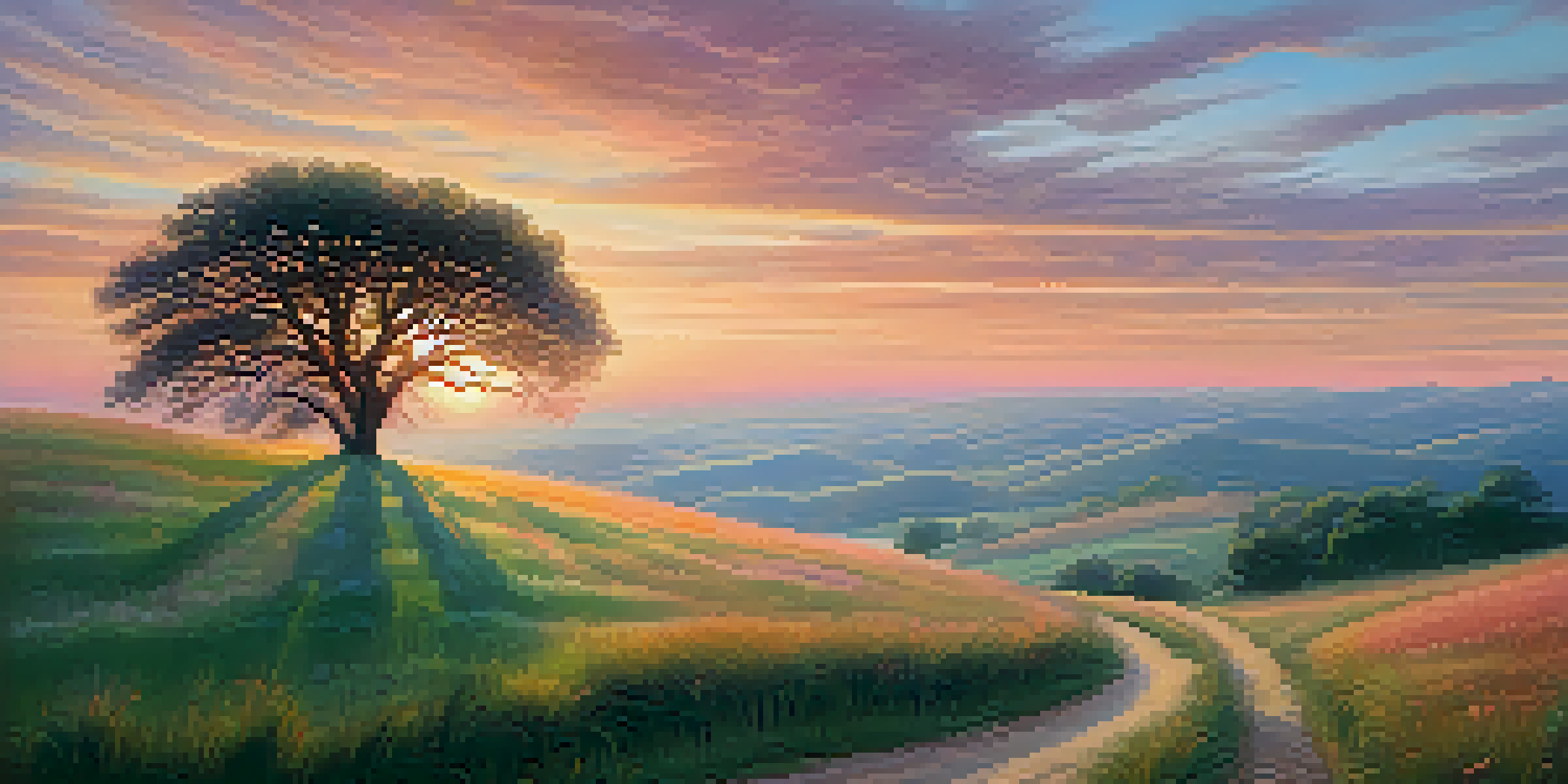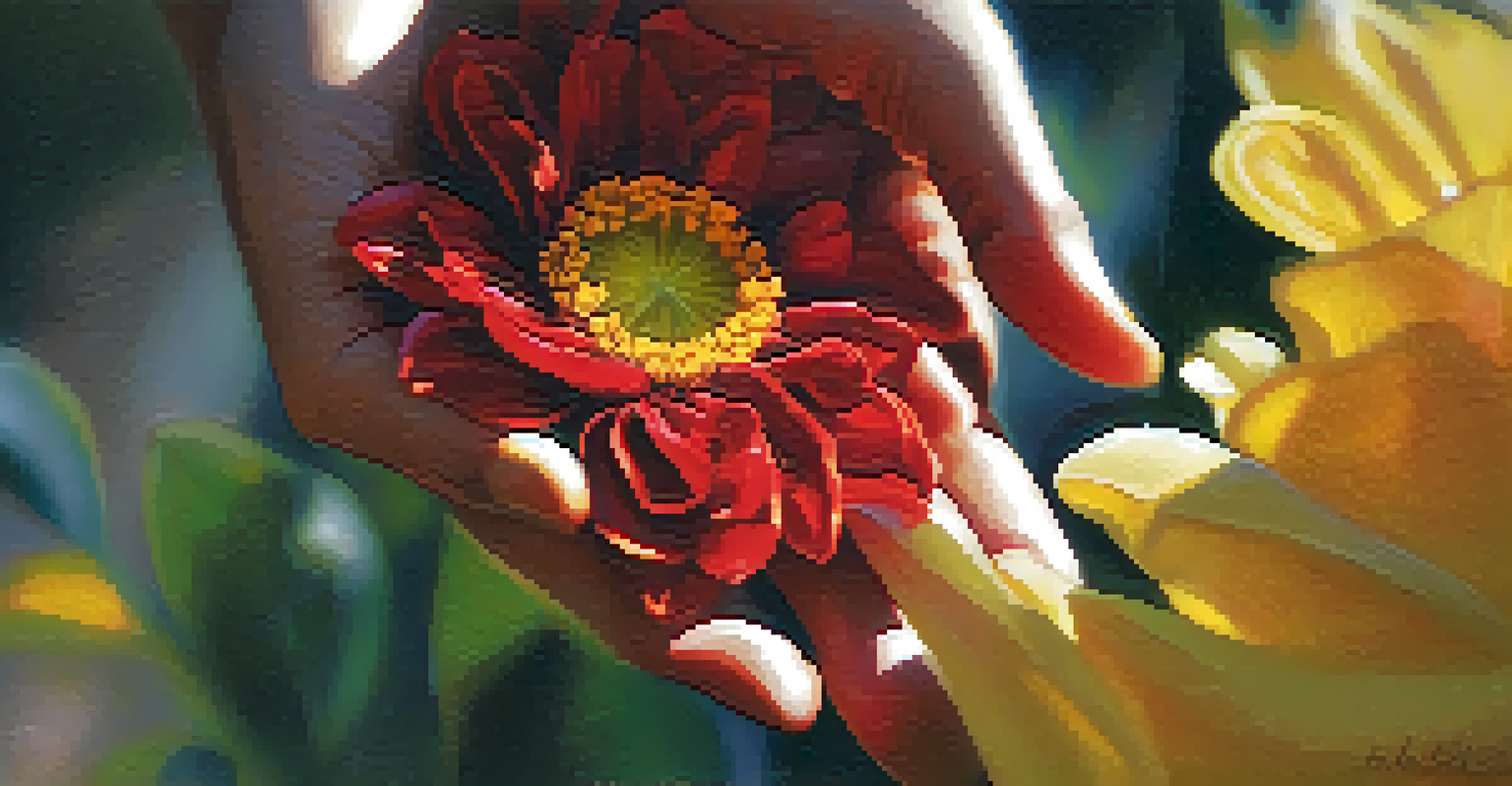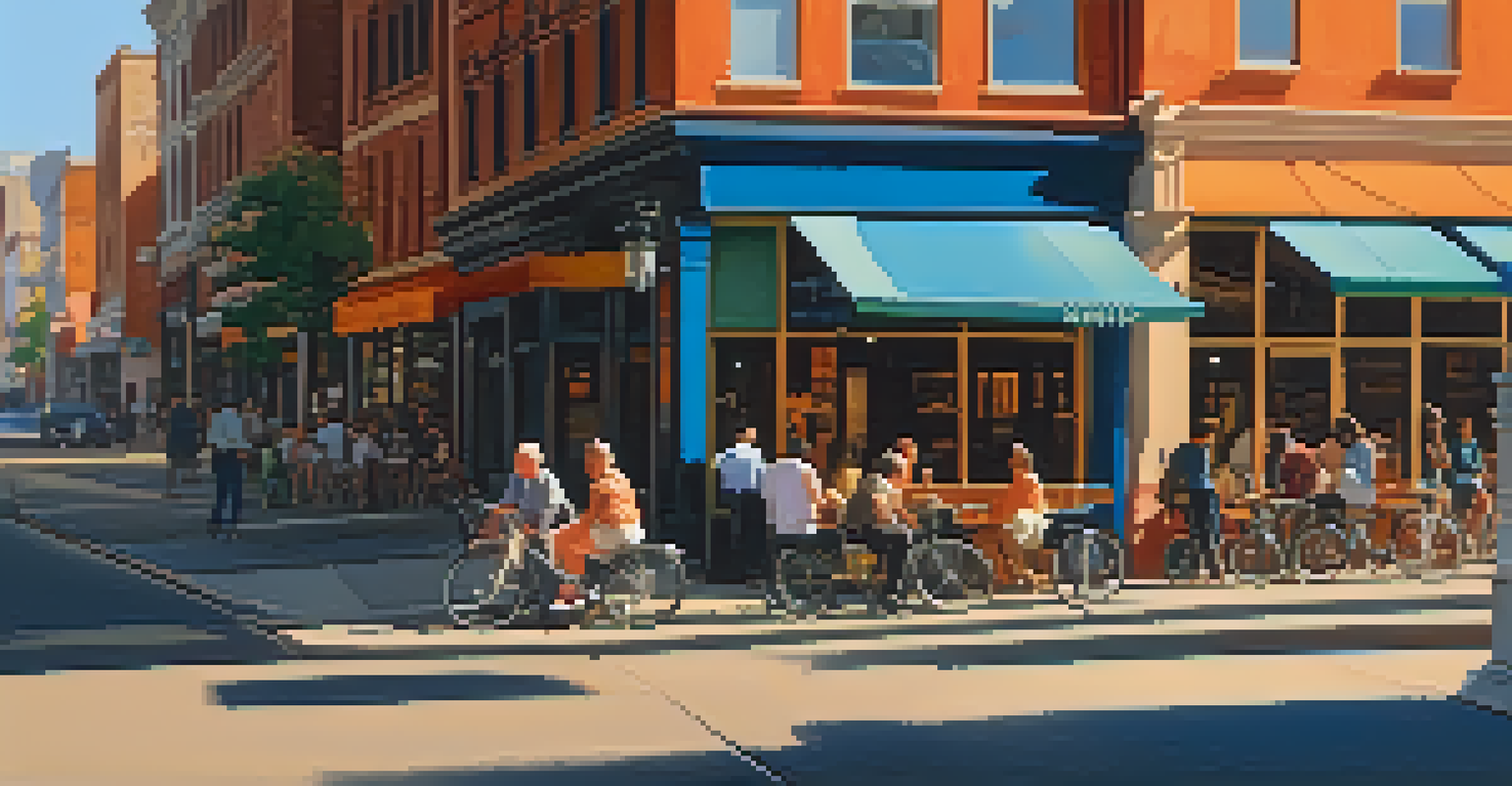Visual Storytelling: The Language of Cinematic Composition

Understanding Visual Storytelling in Cinema
Visual storytelling is the art of conveying a narrative through visual means, often seen in films and photography. It transcends mere words, allowing audiences to grasp emotions and themes instantly. By using imagery, filmmakers can create a unique language that speaks directly to viewers, making the experience more immersive and impactful.
The best stories are those that inspire and evoke, making the audience feel as if they have lived the journey themselves.
Every frame in a film is meticulously crafted to evoke specific feelings and reactions. For example, a close-up shot of a character's face can convey intense emotion, while a wide shot can establish the setting and context. This careful composition not only tells a story but also invites the audience to engage with the narrative on a deeper level.
Ultimately, visual storytelling is about connecting with the audience. It uses elements like color, light, and framing to guide viewers through the storyline, making them feel as if they are part of the experience. By mastering visual storytelling techniques, filmmakers can create memorable cinematic moments that resonate long after the credits roll.
The Basics of Cinematic Composition
Cinematic composition refers to the arrangement of visual elements within a frame, influencing how a story is perceived. Key components include framing, balance, and the rule of thirds, which help create visually appealing and meaningful shots. Understanding these basics is essential for any aspiring filmmaker or visual storyteller.

For instance, the rule of thirds suggests dividing the frame into nine equal parts, placing key elements along these lines or their intersections. This technique draws the viewer's eye and creates a natural flow within the scene. By applying such compositional rules, filmmakers can enhance the visual narrative and maintain audience interest.
Visual Storytelling Enhances Emotion
Visual storytelling uses imagery, color, and lighting to evoke emotions and create a deeper connection with the audience.
Moreover, effective composition also considers the relationship between subjects and their environment. Using negative space, or the area around a subject, can add depth and context to a scene. When executed well, these compositional techniques help convey emotions and themes, making the visual story more compelling.
Color Theory in Visual Storytelling
Color plays a vital role in visual storytelling, as it can evoke specific emotions and set the tone for a scene. Different colors carry different meanings; for instance, red can signify passion or danger, while blue often represents calmness or sadness. Understanding color theory allows filmmakers to manipulate viewers' feelings effectively.
Cinematography is infinite in its possibilities... much more so than music or language.
Consider how a romantic scene might be bathed in warm hues, creating an intimate atmosphere, whereas a suspenseful moment might utilize cooler colors to enhance tension. By deliberately choosing color palettes, filmmakers can guide the audience's emotional journey through the narrative. This strategic use of color transforms a simple scene into a powerful storytelling device.
Additionally, color grading during post-production can further refine the emotional impact of a film. This process alters the colors in the footage to create a specific mood or aesthetic. By mastering both the theory and practical application of color, filmmakers can elevate their visual storytelling to new heights.
Lighting Techniques in Cinematic Composition
Lighting is another crucial element in visual storytelling, shaping how scenes are perceived and felt. The way light interacts with subjects can create mood, highlight emotions, or even symbolize deeper themes. For example, harsh lighting might evoke a feeling of anxiety, while soft lighting can suggest warmth and comfort.
Filmmakers often use three-point lighting—a technique involving key, fill, and back lights—to create balanced and dynamic shots. This method helps enhance the subject's features while maintaining a natural look. By mastering lighting techniques, filmmakers can add depth and dimension to their visual narratives.
Composition Shapes Audience Perception
Cinematic composition, including framing and the rule of thirds, influences how a story is perceived and engages viewers.
Moreover, the direction and quality of light can significantly affect the story being told. A high-contrast setup might emphasize conflict or tension, while diffused lighting can create a sense of serenity. By experimenting with different lighting scenarios, filmmakers can craft visual stories that resonate with their audience on multiple levels.
Framing and Perspective in Visual Storytelling
Framing and perspective are essential tools for visual storytellers, influencing how the audience perceives a scene. The choice of shot—be it a close-up, medium, or long shot—can drastically change the viewer's connection to the characters and events. For example, a close-up shot can create intimacy, while a long shot can establish the larger context.
Additionally, the angle from which a scene is filmed can convey power dynamics or emotional states. A low-angle shot can make a character appear dominant, while a high-angle shot might suggest vulnerability. By thoughtfully selecting framing and perspective, filmmakers can enhance the narrative and draw viewers deeper into the story.
Ultimately, mastering these elements allows filmmakers to guide the audience's emotional responses. By manipulating framing and perspective, they can create a more engaging and immersive experience, leading viewers to feel more connected to the characters and their journeys.
The Role of Movement in Cinematic Composition
Camera movement is a powerful aspect of visual storytelling, adding dynamism and engagement to a scene. Techniques such as panning, tracking, or tilting can enhance the narrative, guiding the audience's attention and creating a sense of progression. For instance, a smooth tracking shot can evoke a feeling of continuity, while a sudden zoom can signify urgency.
Moreover, movement can also reflect a character's internal state. For example, a shaky handheld camera can create a sense of chaos or instability, mirroring a character's emotional turmoil. By incorporating movement thoughtfully, filmmakers can enhance their visual storytelling and deepen the viewer's connection to the narrative.
Planning is Key with Storyboarding
Storyboarding serves as a blueprint for filmmakers, allowing them to visualize and plan their narrative effectively before shooting.
Additionally, the timing of camera movements can significantly impact the storytelling. Well-timed transitions between shots can heighten tension or create moments of relief. By mastering the art of camera movement, filmmakers can craft visually stunning sequences that resonate with audiences long after the story concludes.
Storyboarding and Planning Your Visual Narrative
Storyboarding is a crucial step in visual storytelling, serving as a blueprint for filmmakers. It involves sketching out scenes, shot by shot, to visualize the composition and flow of the narrative. This process allows filmmakers to plan their shots effectively, ensuring that every element aligns with the intended story.
By creating a storyboard, filmmakers can experiment with different compositions, angles, and movements before production begins. This not only streamlines the shooting process but also helps identify potential issues early on. With a clear vision in place, filmmakers can focus on crafting a cohesive and engaging visual narrative.

Moreover, storyboarding fosters collaboration among the production team. It provides a visual reference that can spark discussions about the narrative and creative choices. By investing time in this planning stage, filmmakers can enhance their storytelling and create a more impactful cinematic experience.